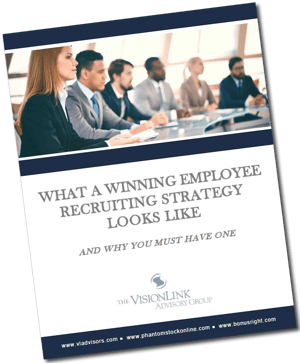Is a Competitive Recruiting Strategy No Longer Necessary?
October 11, 2022 • By Ken Gibson

Many companies are adopting the mistaken assumption that the softening economy means the country will soon experience greater unemployment—and that with more people out of work, the need for a robust recruiting and retention strategy will lessen. Their theory is a bad economy will cure the Great Resignation. People will be happy just to have a job and those battling for available positions will not have the luxury of being picky about their choices.
Bad theory.
Consider these insights from a recent HBR article:
“…as Covid-19 has taught us, not every downturn is the same, and there are strong indications that hiring will continue to be a large obstacle for many companies.
“In 2017 the U.S. Bureau of Labor Statistics issued a press release, stating that the number of unfilled jobs had reached 6.2 million, a historical high. That record was then surpassed in 2018 and then again in 2019 when the number of unfilled jobs reached 7.5 million. That number is now at 10.7 million, 43% higher than the prior record. As a result, there are currently two job openings for every person who is unemployed.

“It seems unlikely that such a vast imbalance in the labor market will be resolved by even a recession…Companies have no choice — they must learn to hire better.” (“To Make Better Hires, Learn What Predicts Success,” Harvard Business Review, August 22, 2022, Atta Tarki and Cade Massey)
The reality is it’s going to continue to get harder not easier to find, hire, and keep great people. The skilled talent market has been shifting and shrinking for years, and the anticipated recession is not likely to lessen the competition for employees.
So, what should you do? How can you create a recruiting strategy that allows you to win in this environment? What must you do to ensure you are able to attract premier performers and leverage your recruiting success?
Well, a good starting point is to acknowledge the current state of the talent market and not pretend you can be tentative or passive about recruiting. At least not if you expect to survive. To succeed, you'll need to develop a smart strategy and then secure buy-in from those responsible for attracting and retaining the people you need. Those in charge of delivering a superior employee experience once your recruits are on board will also need to be aligned. In other words, everyone needs to understand the problem and be committed to the solution.
Examine Your Performance Framework
For this to occur, your company needs a clear recruiting philosophy. This should be a natural byproduct of a well-defined performance framework that governs your organization's plans for growth. Typically, there are three elements to that framework:
1. Business Framework--This piece examines and identifies the company's vision for the future (what the enterprise will look like two to five years down the road), its business model and strategy (how it expects to achieve its vision for growth), and the roles needed to implement that model and strategy (the people required and the skills they must possess)--and the outcomes those roles are expected to produce (how success for those roles is defined).
2. Compensation and Rewards Framework--This part has to do with ensuring the company has a clear pay philosophy and a compensation strategy that reflects it. It also exists to keep the company from placing too big a burden on compensation as it attempts to recruit and retain the people it needs. It defines the role of compensation in the overall performance framework. Enterprises that are successful in recruiting and retaining top talent adopt a total rewards approach to their value proposition. Financial rewards are just one of several factors that make up the employee experience and keep key performers tied to the company.
3. Talent Framework--The third component of a performance framework is having a comprehensive understanding of the talent you have and the talent you will need to achieve your growth goals. An examination of your talent framework should reveal who your key producers are (they are those who are currently achieving the success standards you have defined for their roles). It then identifies skill and talent gaps--background and experience that are needed but aren't presently available within the company. Those two factors then drive your recruiting strategy.
Keep in mind that a successful recruiting plan cannot be developed in a vacuum. Each part of the performance framework impacts the other two. For example, you can't form an effective recruiting strategy if your compensation framework isn't firmly in place. And you can't fully establish a pay philosophy and strategy if you haven't identified key roles and expectations in your business framework.
And so on.
The Five Criteria
Once you've carefully examined your performance framework, you're in a better position to envision what your talent strategy should be. The question is, what does it need to include or address to be successful? In VisionLink’s work with hundreds of businesses across the country, we have observed organizations that are having success in recruiting top talent. These companies have responded to our current reality with a proactive strategy for attracting the people they want. There are things they are doing that others are not which allow them to beat the competition and secure the best people. Consequently, they have high-performance cultures that are driving sustained success. In these companies, we have observed five principles all include in their "attract and retain" approach:
1. Identify Clear Roles. Organizations that attract great talent have defined the roles that must be performed if their targeted growth outcomes are going to be achieved.
2. Define Success. Beyond identifying what roles need to be performed, winning companies are able to identify the outcomes for which those roles are responsible and to define what success looks like for those positions.
3. Know Your Audience. Successful organizations approach recruiting as they would product marketing. They start with a clear understanding of their audience; they know the kind of people they need to attract and what will compel those people to join their companies.
4. Identify Your Methodology. Before a person will agree to be part of your organization, there are certain things they will need to believe about your company. And to believe those things, there are specific things each recruit will want to know or understand. Your recruiting strategy needs to identify the methodology you will follow for communicating what recruits need to know about your company and their role before they will believe they should join you.
5. Offer an Irresistible Value Proposition. The value offer you make to your employees is essentially a promise of a certain kind of experience they will have once they are working for your company. If you want people to join your organization instead of your competitors, you must have a value proposition that distinguishes why the experience at your company will be better. If you want employees to stay and perform, you must then deliver on the promise you made.
When companies take time to consider these principles--and apply the five criteria effectively--they succeed in their recruiting strategies. Those who ignore these issues or think they can win the talent wars by "winging it" are fooling themselves. And in the current economic environment, businesses can't afford to fool themselves.
To dive deeper into this issue, check out VisionLink’s free report, What a Winning Employee Recruiting Strategy Looks Like. It describes the forces that created the present talent market and goes into greater detail about the five criteria every recruiting plan must include to win.
Create a recruiting strategy that will help you now and far into the future. Learn how to attract and retain the best talent by downloading our report today!
Ready to Get Started?
When it comes to building a compensation strategy, you can trust that VisionLink knows what works and what doesn’t. We are ready to share that knowledge with you.
Stay Connected
Receive free, ongoing access to updates on compensation and talent trends, reports, events, and more.


